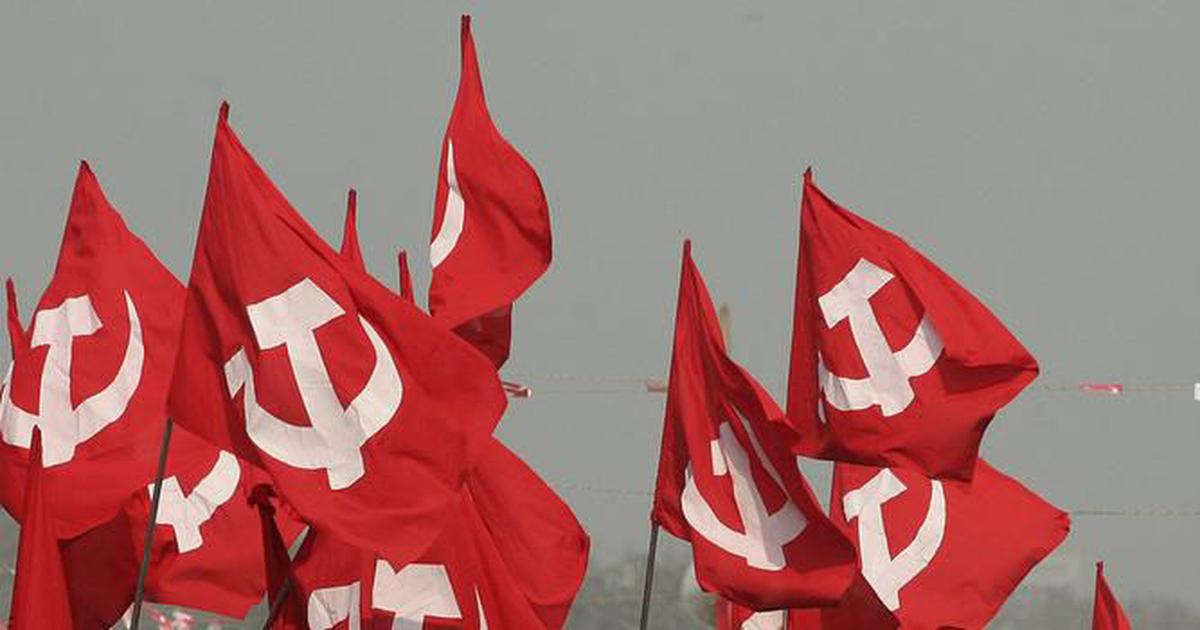“It is said that god has created untouchability. If that is true, first, we should destroy such a god. If the god is unaware of this practice, then he should be destroyed even earlier. If the god is unable to stop this injustice or protect its victims, then he has no place in this world.” – Periyar, Kudi Arasu, 17 February 1929
More often than not, we are not even aware how we start believing certain things or how we are made to believe them. For instance, folk tales condition us to consider some things as obvious truths. In folk tales, when the protagonist leaves his home for a hunting expedition or work or for any other reason, the elders of the family tell him, “Son, you can go to the east or to the west. You can go northwards without thinking twice. But in no case should you go to the south.” In these stories, the south is invariably home to a demon or a witch. Or sometimes, it may be the abode of an enchanting princess, reaching whom involves formidable risks like crossing a river of fire. In these stories, one who allowed fear to get the better of him or was unsuccessful in his mission never returned. In other words, their expeditions didn’t make for much of a story. Those who ignored the injunctions and the warnings and courageously marched towards the forbidden destination and returned from there safely were hailed. Travelling to the south meant inviting perils. But it was also a journey that made heroes.
Why was the south almost always forbidden? Some may say that this element was introduced to make the stories interesting and exciting. When the hero, brushing aside all counsel, embarked on a journey southwards, he proved that he was a lionheart. But had it been so, like the names of places and characters, the forbidden place didn’t always have to be in the south. It could have been in the east, west or north. Why only south? Some wisecracks may say that according to the Vaastu Shastra, south is the abode of Yamaraj. Even if that is so, the question remains why Yamraj or the Vaastu Shastris chose the south as abode of the god of death.
To get to the root of this, we will have to first understand the genesis of myths. While the entire society plays a role in manufacturing myths, it is the elite that gives them a specific character, associates them with specific occasions and uses them as it wishes to. Of course, it is the ordinary people’s faith in the myths that makes the myths important. The elite wants to project itself as discrete from the others, as a special people. It wants the ordinary people to believe that its high status and special privileges, which it has acquired through deceit, are divinely ordained. It wants everyone else to believe that its status in society is not the outcome of any conspiracy or an unholy alliance but a gift from god. Designating the south as the abode of Yamaraj is part of this cultural stratagem. What is noteworthy here is that in the villages, the settlements of the Untouchables and the Shudras are invariably in the south.
The question is, why south? Why are the demons said to reside in the south? Why was Yamaraj housed in the south? Why have the Shudras and the Dalits been confined to the south?
To understand Periyar’s struggle against the Indian social outlook, which he said was responsible for many ills plaguing society, we need to solve this south conundrum. For this, we will have to go back in time. It is an established fact that the Indus Valley Civilization (3300-1750 BCE), spread over an area of more than 12 lakh sq km, was a prosperous urban civilization and the most advanced among the contemporary human settlements. Climate change brought about the fall of this great civilization, forcing the people to migrate. The Aryan invasion of India (1500 BCE) only hastened the process of migration. The migrants took one of the two routes. The first led to the Ganga-Yamuna basin via Punjab. Those who took this route founded a flourishing civilization in the Terai region, which is called Ganga-Yamuni civilization. Others moved south via Rajasthan, Gujarat and Konkan. They assimilated with the tribes inhabiting south India. The script found on the coins of the Kalabhra dynasty, that ruled a major part of south India from 3rd to 7th century CE, is very similar to the Harappan script, hinting at some link between the two.
The Harappans who had moved to the Ganga-Yamuna basin ran into the Aryans. The non-Aryan tribes almost surrendered to the Aryans. On the other hand, the Harappans who had settled in the south preserved their traditional culture and values. For almost a millennium that followed, the south-Indian civilization, which was basically non-Aryan, and the northeast-Indian civilization, remained unaware of each other’s existence. Around 600-700 BCE, the Aryans came to know about the south-Indian civilization and old memories came back. The Aryans held a grudge against the non-Aryans because the non-Aryans had tried to stop them while traversing through the Indus Valley. Moreover, the non-Aryans were not ready to concede that the Aryan culture was superior to their culture. This hostility and anger made the Aryans describe non-Aryans as Rakshasas, Daityas and Danavs. This trend continued in the literature that was written later in Sanskrit.
From the 4th-5th centuries BCE, Jain and Buddhist Sramans started arriving in the south. Based on pragmatic morality, these philosophies were wholeheartedly welcomed there. A confluence of ancient Tamil literature and the Buddhist and Jain philosophies laid the foundations of the Sangam literature. Brahmins reached the south about 200 years later, when Buddhism was on the decline. They brought with them their culture based on caste-based discrimination. They began brainwashing the rulers and the influential sections of society. New mythological narratives were fashioned and the theory of incarnation was floated. This theory made the Brahmins natural claimants to state power, enabling them to thrust arbitrary decisions on the rest of the people. Gradually, societies came under their spell. Entire villages started being gifted to the Brahmins to please them. This created a livelihood crisis for the tillers of the land gifted to the Brahmins.

The growing domination of the Brahmins and the practice of presenting entire villages to them for their settlements or for constructing temples or performing yagnas generated great resentment, which culminated in the Kalabhra revolt. The Kalabhras were Shudra farmers and Adivasis. In the beginning of the 3rd century they attacked the Pandya, Chera, Pallava and other rulers who had come under the spell of Brahmanism, defeated them and founded the Kalabhra Empire. The entire Tamil-speaking region, which included modern Tamil Nadu, Kerala and parts of Karnataka and Andhra Pradesh, formed part of the Kalabhra Empire. The Kalabhra rulers took back the lands gifted to the Brahmins for building temples and shrines. The state stopped patronizing yagnas and ritual sacrifices and Buddhism was promoted.
The Kalabhra rulers ruled south India from the 3rd to 5th centuries. During this period, Brahmanism languished. This was also the time when the Brahmins were busy writing and rewriting the Ramayana, the Mahabharata, the Gita and the Puranas. Interpolations were being made in the Vedas and other works in Sanskrit. In north India, Brahmanism was flourishing under state patronage. Manusmriti’s laws were in force and the Shudras and the Atishudras were deprived of all rights, including the right to acquire an education. There was no one to challenge the brahmanical dominance over north India. The Kalabhra rulers’ endeavour to uproot Brahmanism triggered a reaction in the form of phoney narratives of north’s victory over the south. Since Buddhism and Jainism had struck roots in the south much before the entry of Brahmanism, epics like the Ramayana, depicting the victory of north-Indian culture over the south, was music to the ears of the protagonists of Brahmanism. The Ramayana and other scriptures branded the self-respecting and hardworking people of the South, who had managed to keep themselves insulated from the Aryan culture and had indeed had their own flourishing civilization, as Rakshasas and Danavs.
There are many instances of the Aryans’ loathing for the non-Aryans in Ramayana and other scriptures. Rama asks the sea to provide him a passage to Lanka. When the sea refuses, Rama takes aim at it with his bow and arrow. The sea makes a personal appearance and pleads to Rama to keep the arrow back in the quiver. Rama says that an arrow that has been placed on the bowstring cannot be put back. The sea then requests Rama to release the arrow towards Drumkulya in the north (Valmiki Ramayana, Yuddhakand, 22rd sarg).
What is interesting is that Ravana’s abode was in the south. That was where he had kept Sita after abducting her. Lanka was where the Rakshasas lived. But the sea does not plead with Rama to take aim at Lanka. He requests him to shoot the arrow to the north, where Aabhirs, Kirats, Yavanas and others live and reveals that even the touch of these “vicious peoples” desecrates its waters. Just as Rama, at the request of a Brahmin, had beheaded Shambuk, without a second thought, he shoots the arrow to the north as requested by the sea. Now, the Aabhirs, Kirats, Yavanas and others had offered stiff resistance to the Aryans in the Indus Valley. The Rigveda describes this battle as Daasraj Yuddha, that is, a war between 10 kings. The Ramayana and other scriptures transformed the political rivalry between the Aryans and the non-Aryans into religious and cultural hatred. This episode also shows that the concept of untouchability, which bars the Shudras and the Untouchables from drawing water from public sources, is at least as old as the Ramayana.
The missionaries of Vedic culture, who went to the South in the first and the second centuries BCE, managed to bring the rulers and elite under their spell. But the ordinary people, especially the local tribes, were untouched by the influence of the brahmanical culture. They were proud of their own culture.
The plateaus and the forests of the Vindhya region formed the geographical separator of the two cultures. This was the region where a confrontation between the two was likely. The Brahmin patrons of the north-Indian culture feared and envied the south. They therefore propagated the theory that north India was superior to south India. And that, coupled with the fear of the south, led to folk tales labelling the south in general as forbidden. Since like the Asurs and the Rakshasas, the Shudras and the Panchams were also aliens for the Brahmins, they were settled near the southern boundary of the villages.
Around 1000 CE, north India started facing invasions by outsiders. Under the leadership of Shankaracharya, south India had already been converted into a citadel of Brahmanism in the 8th century. Due to the political turmoil in the north, the south became a safe haven for the brahmanical religion in the centuries that followed. Brahmins were given special privileges and the Varnashram Dharma was re-established. With the aid of the State, the caste system became so strong that the Shudras and Atishudras struggled to live. Sant literature arose as a response to this situation. However, for myriad reasons, the Sants could not challenge Brahmanism. Their reforms were confined to the realm of religion, and the Brahmins remained safe and secure.
The 19th century brought fresh challenges for the Brahmins. The colonial government framed laws allowing the Shudras and Atishudras access to education. That made them realize their social subordination. They realized that they were slaves not only to the British but also to the Brahmins. At the hands of the Brahmins, religion and caste were instruments to keep Shudras and Atishudras enslaved. The Brahmins were also protectors of the system of untouchability. Initially, conversion was seen as an instrument for social emancipation. But within a couple of decades it became clear that the idea of a religion in itself was authoritarian and unless it was dismantled, neither could human dignity be protected nor was emancipation possible. That made Periyar challenge the authority of god. He asserted that if the Dravidians had to win social freedom, they would have to free themselves from the religion and the god of the Brahmins. He said this was essential for the liberty, equality and self-respect of the Dravidians.
In 1932, Periyar visited Sri Lanka on the invitation of the Tamilians settled there. In his speech in Colombo he said that Tamil people would have to break free from the bonds of god, religion and nationalism for the ushering in of self-respect and humanity (Kudi Arasu, 30 October 1932). He believed that religion and god are the biggest enemies of humanity.
While attacking Hinduism, Periyar targeted the Ramayana, the Gita and Manusmriti. He listed the flaws in the characters of Ram, Laxman, Dashrath, Sita and others who were projected as ideals of Hinduism. He asserted that Ravana’s character is the ideal and Ravana was the real hero of the Dravidians. He demolished all myths which were used by Brahmins to perpetuate their hegemony in the name of religion. Periyar deconstructed brahmanical scriptures, because of which he has become an irritant to those doing politics in the name of religion.
In 2002, when Uttar Pradesh chief minister Mayawati proposed installation of a statue of Periyar in Ambedkar Park, Lucknow, the Bharatiya Janata Party opposed it tooth and nail. The BJP’s stiff opposition forced her to back out. In 1980, in Tamil Nadu, chief minister M.G. Ramchandran did not allow the installation of Periyar’s statue at Kanchipuram. He feared that it would antagonize the Shankaracharya of Kanchipuram. Later, though, the opposition party, the Dravida Munnetra Kazhagam (DMK), challenged the government’s decision in the Madras High Court, which accepted its plea and ultimately Periyar’s statue came up in Kanchipuram.
It is heartening to note that of late, north Indians have started seeing Periyar in a new light. His acceptance is growing and will continue to do so in the times to come. Ideas take a long time to mature, spread and trigger a revolution.
(Translation: Amrish Herdenia; copy-editing: Anil)
Forward Press also publishes books on Bahujan issues. Forward Press Books sheds light on the widespread problems as well as the finer aspects of Bahujan (Dalit, OBC, Adivasi, Nomadic, Pasmanda) society, culture, literature and politics. Contact us for a list of FP Books’ titles and to order. Mobile: +917827427311, Email: info@forwardmagazine.in)
The titles from Forward Press Books are also available on Kindle and these e-books cost less than their print versions. Browse and buy:
The Case for Bahujan Literature
Dalit Panthers: An Authoritative History







